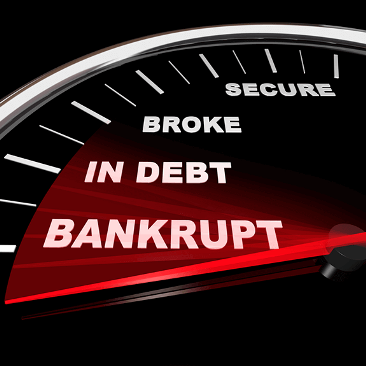Your financial situation can deteriorate for a number of reasons. Some of these are within your control while others are not. Regardless of the causes, you may have decided that it is time for you to file for insolvency. This is certainly not an easy decision but is sometimes one that simply must be made.
The most common types of insolvency for individuals and small business owners are Chapter 7 and Chapter 13. Chapter 7 deals with liquidation while Chapter 13 deals with reorganization. It is also good to get the advice of a Scottsdale bankruptcy attorney. This will ensure that you are getting all of the pertinent details regarding your particular case. Here is some basic information:
Chapter 7
This type of claim will ensure that most of your unsecured debt is discharged. When you petition for Chapter 7 insolvency, most of your property will remain with you. This, however, is dependent upon your equity and the ownership of certain assets. In certain cases, assets or equity that are not exempted by the law may be sold. This is so that your creditors can receive at least a small portion of what was initially owed to them. This is typically taken care of by a trustee.
Chapter 7 is usually only available to individuals with a certain level of income. This is typically an option that is set aside for those that earn less than the median wage detailed by their state. People with higher incomes may not be able to claim Chapter 7 insolvency. In order to be granted this claim, you are going to have to complete a large amount of forms. There are also certain legal conditions that you are going to have to pass through. Once this has been done, you would be considered for Chapter 7 bankruptcy. This process typically takes between three to four months to be completed.
Chapter 13
When you apply for Chapter 13 insolvency, your debt is not being absolved. Rather, you are attempting to pay back your creditors with the help of a repayment plan. This claim endeavors to pay back most, if not all, of the money that you owe to your creditors. The advantage of Chapter 13 insolvency is that none of your property is liquidated to pay back the creditors.
In order to be eligible for Chapter 13, you do not have to have a specified income. You do, however, need a steady income. It is with these wages that you will pay back what you owe. There is a limit to how much unsecured and secured debt that you can owe, nonetheless. This is quite a complicated process and typically needs a qualified lawyer. In order for the whole process to be completed, you are going to have to submit a repayment plan to the court. The entire process can take up to five years. This is dependent on how much money you are making and how quickly you can pay back your debts.
This information will help you to make a more informed decision regarding your bankruptcy situation. You will be able to find a Chapter that suits you best. This should, hopefully, help you to get out of your financial difficulties.
